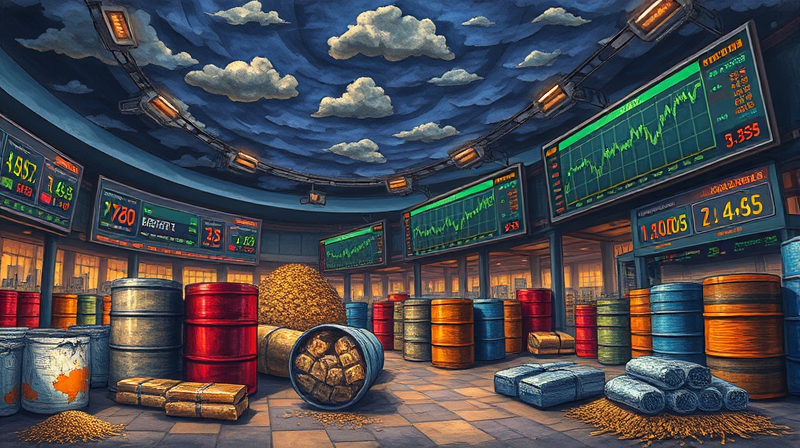
Mid-2025 has witnessed a broad slide in commodity prices as markets grapple with the prospect of a global downturn. From energy to metals and agricultural goods, traders are adjusting positions amid growing unease over economic momentum.
In this article, we explore the drivers behind the selloff, examine key sectoral trends, and outline strategies for navigating this challenging environment.
The current climate is defined by heightened trade tensions and pervasive uncertainty in economic policymaking. Protectionist measures, particularly recent US tariff hikes, have rattled supply chains and curtailed industrial demand.
At the same time, major economies exhibit signs of fading momentum. Consumer sentiment indices have weakened, corporate profit margins are under pressure, and business surveys hint at contracting activity. These headwinds have amplified mounting recession fears across commodity markets.
Energy commodities have led the downdraft. According to the World Bank’s June 2025 report, the energy price index fell by 4.4% in May, pulled down by an 8.4% drop in US natural gas and a 4.8% slide in crude oil.
Prices are at four-year lows amid a perfect storm of factors:
Brent crude is forecast to trade near $60/barrel by end-2025 and could slip to $50 by end-2026. This outlook reflects both robust supplies and a subdued demand environment brought on by slowing expansion.
Food commodity prices have broadly receded as abundant harvests meet cautious buyer sentiment. Yet volatility persists in certain grains.
Key agricultural dynamics include:
Corn prices remain under pressure even as inventories tighten, while soybean markets have seen spurts of activity tied to renewable fuel policies. Wheat staged a modest rally post-harvest delays, but overall agri-commodities face a downward bias amid weakening demand.
Metals markets are diverging sharply. Industrial metals such as copper face headwinds from slower manufacturing output, while steel and aluminum prices grapple with US tariff hikes that have doubled import fees.
In contrast, gold has emerged as a standout performer. Up nearly 29% year-to-date, it is on track for its best annual gain since 1979, underscoring its role as a safe haven asset in turbulent times.
US protectionist policies remain a key wildcard. Recent tariff escalations on metals and agricultural imports have injected fresh caution into market sentiment, with China’s response measures looming as a potential disruptor.
Broadly, the unpredictability of the “Trump factor” and ongoing geopolitical frictions amplify risk premia in commodity pricing. Traders must monitor policy announcements closely, as sudden shifts could trigger rapid price swings.
Given the prevailing conditions, investors should adopt a balanced approach. Diversification across sectors can mitigate exposure to steep losses in one commodity class, while selective hedging may protect against further declines.
Key considerations include:
Ultimately, vigilance and flexibility will be paramount as markets navigate these strong global headwinds. By staying informed and responsive, investors can position themselves to weather the downturn and seize gains when sentiment recovers.
References













